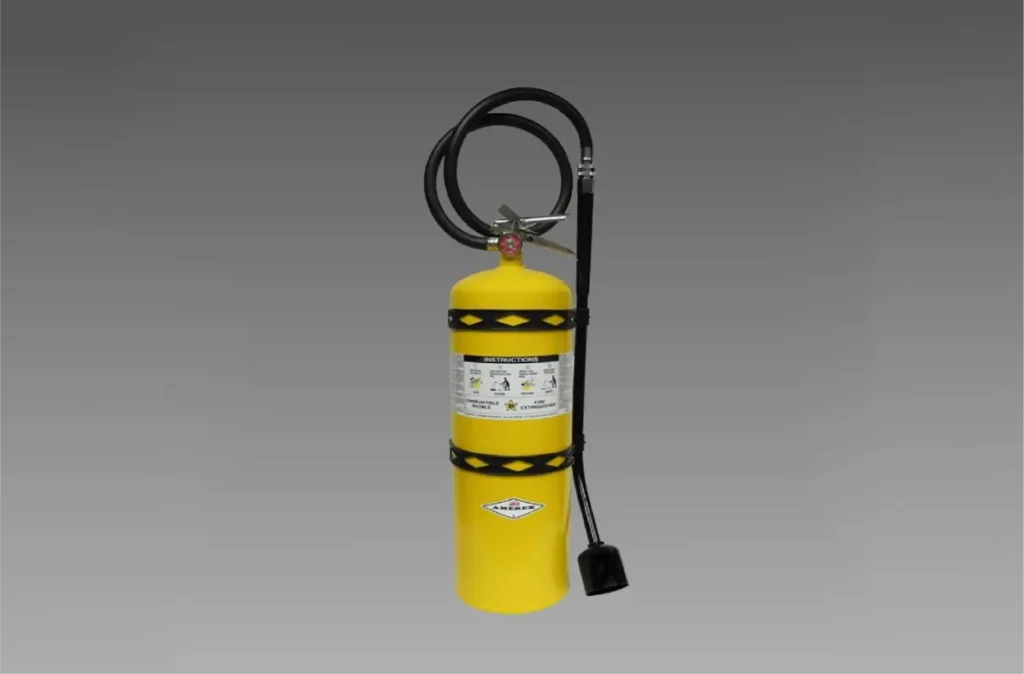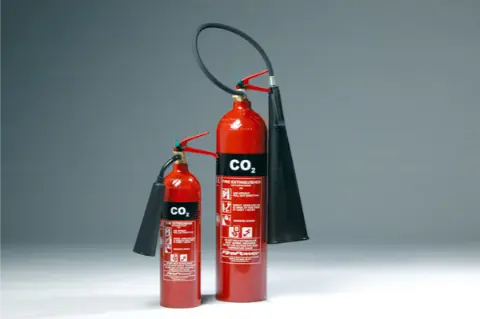
Class D Powder Fire Extinguishers
Discover Class D fire extinguishers designed for combustible metal fires. Learn about M28 and L2 powders, their applications, and how
Best for Class B & Electrical Fires
CO₂ Fire Extinguishers, labeled with a black label, are highly effective for tackling electrical fires and flammable liquid fires (Class B). These extinguishers are commonly found in computer server rooms, offices, and industrial facilities due to their clean-agent properties.

CO₂ extinguishers are unique because they contain pressurized carbon dioxide gas, rather than a liquid-based extinguishing medium. One key advantage is their ability to suppress fires without leaving any residue, making them ideal for protecting sensitive electrical equipment.
According to the latest BS5306 standards, it is required to install an extinguisher that can combat electrical fire risks, such as CO₂, within 10 meters of any electrical equipment.
CO₂ extinguishers function by displacing oxygen at the base of the fire, effectively smothering the flames and cooling the fire to prevent re-ignition. However, since CO₂ does not remove heat or fuel, there is a risk of fire reignition once the gas disperses.
While CO₂ extinguishers are excellent for electrical and flammable liquid fires, they should be paired with other extinguisher types for broader fire protection. For example:
Contact us now to learn more about CO2 Fire Extinguishers and how they can be an essential part of your fire safety plan.
A CO₂ extinguisher works by displacing oxygen at the base of the fire, cutting off the fire’s oxygen supply and reducing heat to prevent reignition.
They are most effective for Class B fires (flammable liquids) and electrical fires.
Yes! Since they leave no residue, CO₂ extinguishers are safe for electrical fires without damaging sensitive equipment.
CO₂ extinguishers are not as effective outdoors, as wind can disperse the gas too quickly before it fully suppresses the fire.
Most CO₂ extinguishers discharge in 5-10 seconds, depending on the size. Always refer to the manufacturer’s guidelines for specific details.
No, CO₂ extinguishers are not recommended for Class F (cooking oil/fat) fires. Use a Wet Chemical Extinguisher instead.
Follow the PASS acronym:
Only if the area is properly ventilated. CO₂ displaces oxygen, which can be dangerous in small, enclosed spaces. Adequate ventilation is essential when using them in enclosed areas.
Don’t hesitate to reach out to us, or you can easily fill out the form below. We’re here to assist you.


Discover Class D fire extinguishers designed for combustible metal fires. Learn about M28 and L2 powders, their applications, and how

are designed for safely extinguishing cooking oil and fat fires, commonly found in commercial kitchens and the food industry.

work on various fires, including liquids and electrical equipment, by emitting a cooling mist to suppress and contain the fire.